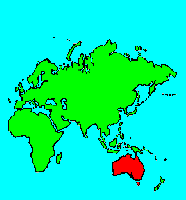SPECIES INFO
Manna gum (Eucalyptus viminalis) is found widely in Australia. This species is also planted in California. Although the adult leaves are usually acuminate lanceolate, the younger leaves can have a variety of shapes. The young leaves can be opposite, while the adult leaves are alternate. The bark can be smooth or rough.Eucalyptus genus is native to a large area from Malaysia though the Philippines and Indonesia to Australia. This is a large genus with about 500 species of shrubs and trees. There also are some mallees in this genus. Mallees are unusual plants that have a fireproof heavy woody trunk that sends up many shoots. There are 32 species, one natural hybrid, and two subspecies established in greater North America.
Myrtle Family (Myrtaceae) is a large family of almost 4,000 species arranged in about 120 different genera. There are 122 species in 20 different genera growing in greater North America. Some authors divide this family into the Psiloxyloideae and Myrtoideae subfamilies.
The natural range of this family in the New World is from Mexico south through Central America through most of South America. In the Old World this family is found naturally in most of Africa except the large Sahara region. In Eurasia this is found from Spain east to Turkey and the Near East and further east to India, SE Asia, and much of the temperate Orient. This is also found further south through Malaysia to Indonesia, New Guinea, and Australia.
Myrtiflorae Order is an assemblage of over twenty different families.
Dicots (Dicotyledoneae Class) are the predominant group of vascular plants on earth. With the exception of the grasses (Monocots) and the Conifers (Gymnosperms), most of the larger plants that one encounters are Dicots. Dicots are characterized by having a seed with two outer shell coverings.
Some of the more primitive Dicots are the typical hardwood trees (oaks, birches, hickories, etc). The more advanced Dicots include many of the Composite (Aster) Family flowers like the Dandelion, Aster, Thistles, and Sunflowers. Although many Monocots reach a very high degree of specialization, most botanists feel that the Dicots represent the most advanced group of plants.
Seed plants (Phylum Embryophyta) are generally grouped into one large phylum containing three major classes: the Gymnosperms, the Monocots, and the Dicots. (Some scientists separate the Gymnosperms into a separate phylum and refer to the remaining plants as flowering plants or Angiospermae.)
For North American counts of the number of species in each genus and family, the primary reference has been John T. Kartesz, author of A Synonymized Checklist of the Vascular Flora of the United States, Canada, and Greenland (1994). The geographical scope of his lists include, as part of greater North America, Hawaii, Alaska, Greenland, Puerto Rico, and the Virgin Islands.
Kartesz lists 21,757 species of vascular plants comprising the ferns, gymnosperms and flowering plants as being found in greater North America (including Alaska, Hawaii, Greenland, Puerto Rico and the Virgin Islands.
There are estimates within the scientific world that about half of the listed North American seed plants were originally native with the balance being comprised of Eurasian and tropical plants that have become established.
Plant kingdom contains a large variety of different organisms including mosses, ferns, and seed plants. Most plants manufacture their energy from sunlight and water. Identification of many species is difficult in that most individual plants have characteristics that have variables based on soil moisture, soil chemistry, and sunlight.
Because of the difficulty in learning and identifying different plant groups, specialists have emerged that study only a limited group of plants. These specialists revise the taxonomy and give us detailed descriptions and ranges of the various species. Their results are published in technical journals and written with highly specialized words that apply to a specific group.
On the other hand, there are the nature publishers. These people and companies undertake the challenging task of trying to provide easy to use pictures and descriptions to identify those species.

